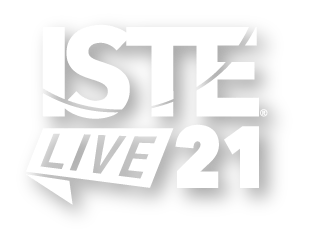

Taking Scratch Into the Real World |
Explore and create : Creation lab
Matthew Mah
Have your students mastered game-making and coding interactive adventures in Scratch? Move your adventures in coding into the real world! We'll transfer your Scratch experience into AR-enhanced escape rooms, VR interactive assessments and code-based 3D printing. Make coding tangible and real!
| Audience: | Library media specialists, Teachers, Technology coordinators/facilitators |
| Skill level: | Beginner |
| Attendee devices: | Devices required |
| Attendee device specification: | Laptop: Chromebook, Mac, PC Tablet: Android, iOS, Windows |
| Topic: | Innovation in early childhood/elementary |
| Grade level: | 3-5 |
| Subject area: | Computer science, STEM/STEAM |
| ISTE Standards: | For Educators: Learner
|
Block-based coding like Scratch makes programming accessible to the youngest of learners. Transferring this learning to technologies that make tangible, real-world objects reinforces the validity of programming in the real world. Virtual environments like CoSpaces provide a forum for local and global collaboration that overcome COVID physical restrictions. Tinkercad Codeblocks allow creation of complex 3D objects. Both technologies provide opportunities for younger students to easily apply block-based programming concepts to link the digital with the physical.
Introduction: an overview of block-based programming concepts using Scratch. Demonstrations of simple interactive games that provide feedback to the user. 5 minutes.
CoSpaces CoBlocks: presentation of the curriculum objectives of science and math fairs. Introduce CoSpaces as a virtual reality alternative that enhances collaboration through digital interaction. Overview of CoSpaces CoBlocks that help build interactive environments. Provide opportunity for audience to join together in a prepared CoSpace. 20 minutes
Tinkercad Codeblocks: briefly demonstrate how to construct a simple class ring with name engraving in 3D. Show how Codeblocks can simplify and expedite the procedure through code. Provide a template for audience to tinker. 20 minutes.
Conclusion and Q&A.
COVID-related restrictions on physical environments has impacted local and global collaboration at my school. Math and science fairs are examples of traditional events that cannot be held at this time. Virtual reality and augmented reality environments such as CoSpaces and Reality Composer are expected to increase in popularity as educators turn to digital solutions. 3D printing costs are decreasing and availability and accessibility increasing providing an easy entry to tangible object creation.
https://elearningindustry.com/vr-ar-technology-use-post-covid
https://innovateniagara.com/news/article/could-vr-be-the-solution-the-education-industry-needs-during-covid-19-into/
https://edtechmagazine.com/k12/article/2019/06/resurgence-3d-printers-modern-learning-environments-perfcon

Matthew Mah is the Head of Education Technology (Junior School) at West Point Grey Academy in Vancouver, Canada. His roles as teacher coach, STEM teacher, and technology administrator have allowed him to see firsthand how policies affect every stakeholder. He has presented locally and internationally on diverse topics such as computational thinking, digital citizenship and photography. He is a Google Certified Innovator/Trainer, Microsoft Innovative Educator Expert/Trainer, and Adobe Creative Educator/Associate.